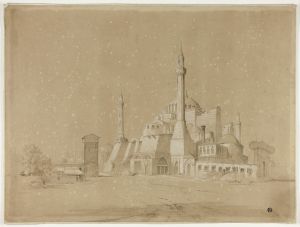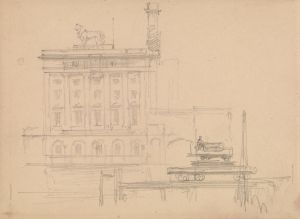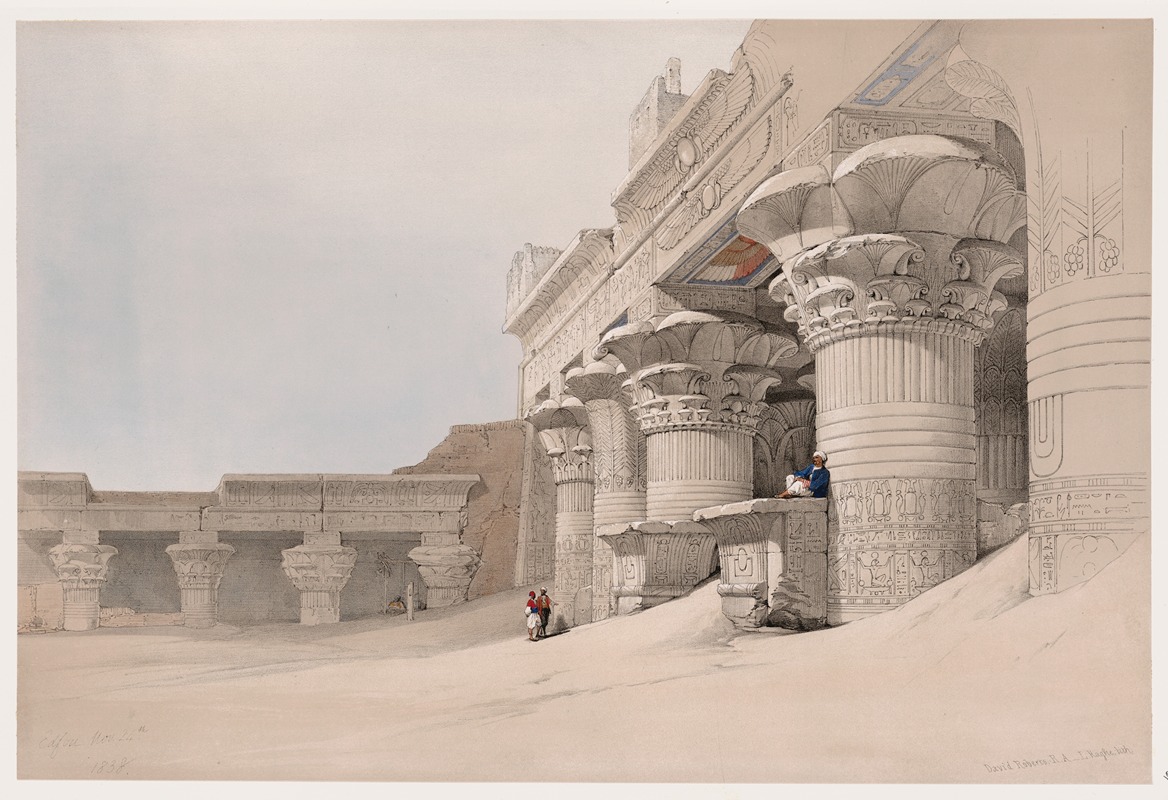
Edfou [Edfu, Idfû]. Nov. 24th, 1838.
A hand-painted replica of David Roberts’s masterpiece Edfou [Edfu, Idfû]. Nov. 24th, 1838., meticulously crafted by professional artists to capture the true essence of the original. Each piece is created with museum-quality canvas and rare mineral pigments, carefully painted by experienced artists with delicate brushstrokes and rich, layered colors to perfectly recreate the texture of the original artwork. Unlike machine-printed reproductions, this hand-painted version brings the painting to life, infused with the artist’s emotions and skill in every stroke. Whether for personal collection or home decoration, it instantly elevates the artistic atmosphere of any space.
David Roberts' artwork Edfou [Edfu, Idfû]. Nov. 24th, 1838. is a lithograph based on a sketch created during his travels in Egypt in the 19th century. Roberts, a Scottish painter and one of the most prominent Orientalist artists of his time, embarked on a journey to the Middle East in 1838 to document the region's ancient monuments and landscapes. His works are celebrated for their detailed and accurate depictions of historical sites, capturing the grandeur and cultural significance of these locations.
This particular piece depicts the Temple of Edfu, one of the best-preserved ancient Egyptian temples, dedicated to the falcon-headed god Horus. Located on the west bank of the Nile River in the city of Edfu, the temple was constructed during the Ptolemaic period, between 237 and 57 BCE. Roberts visited the site on November 24, 1838, during his expedition, which lasted from 1838 to 1839. His sketches from this journey were later transformed into lithographs by Louis Haghe, a Belgian lithographer, and published in the monumental six-volume work The Holy Land, Syria, Idumea, Arabia, Egypt, and Nubia between 1842 and 1849.
The lithograph showcases the temple's monumental architecture, including its towering pylons, intricate carvings, and hieroglyphic inscriptions. Roberts' depiction emphasizes the scale and majesty of the structure, as well as its integration into the surrounding landscape. His work provides a valuable visual record of the temple as it appeared in the 19th century, prior to modern restoration efforts.
David Roberts' artistic contributions were instrumental in sparking European interest in Egyptology and the preservation of ancient monuments. His works remain significant for their historical and artistic value, offering insights into the cultural heritage of the regions he visited.





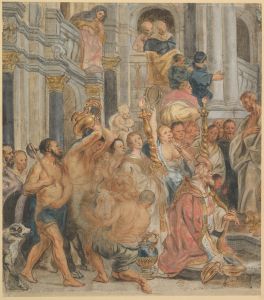
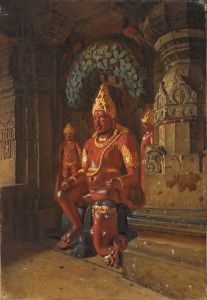

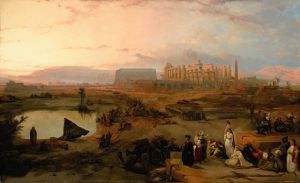
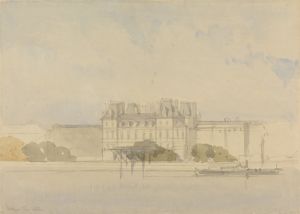
![Karnac [Karnak]. Nov. 27, 1838.](/imgs/217501/s/david-roberts-karnac-karnak-nov-27-1838-2ea4b2c4.jpg)
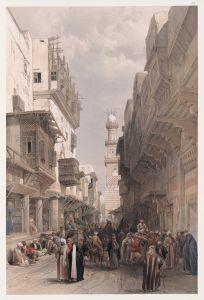
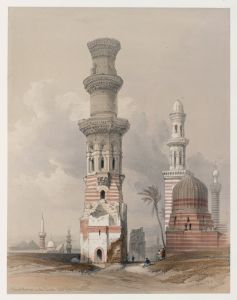
![Temple at Esneh [Isnâ]. Nov. 25th, 1838.](/imgs/217542/s/david-roberts-temple-at-esneh-isna-nov-25th-1838-c31fdf34.jpg)
![Temple of Kalabshee [Kalabsha, Kalâbishah], Nubia. Nov. 1838.](/imgs/217548/s/david-roberts-temple-of-kalabshee-kalabsha-kalabishah-nubia-nov-1838-be0ac440.jpg)
![Temple of Wady Kardassy [Qirtâsî] in Nubia.](/imgs/217550/s/david-roberts-temple-of-wady-kardassy-qirtasi-in-nubia-d2cce283.jpg)
![Temple of Wady Saboua [Wadi al-Sabua], Nubia.](/imgs/217551/s/david-roberts-temple-of-wady-saboua-wadi-alsabua-nubia-52e62db.jpg)
